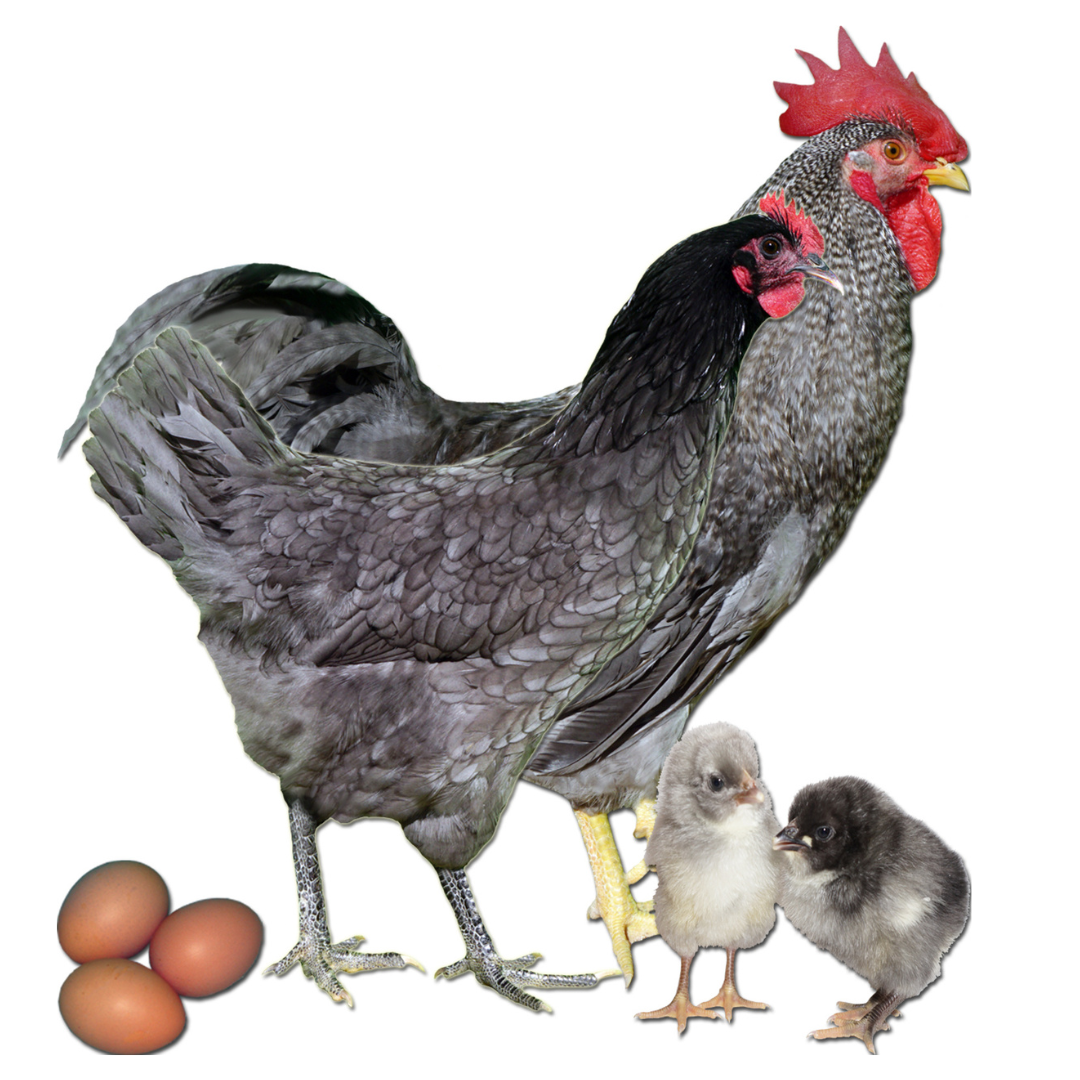
Plymouth Rocks are as beautiful and productive as they are easy to care for as part of your flock. In 1620, a travel-weary band of pilgrims set foot on Plymouth Rock. Years later, an ideal backyard chicken breed was named in honor of that famous site. They link the flock owner with American history while yielding abundant eggs and tasty meat, making them one of our best selling breeds. In bygone days, when nearly every farm had a chicken flock, these birds’ utility and beauty made them the breed of choice.
| Temperament | Weight | Eggs per Year | Egg Size | Egg Color | Cold Hardy | Heat Hardy |
|---|---|---|---|---|---|---|
| Docile, Easy to Care For | 5-6 lbs. | 250 | Large | Brown | Yes | Yes |
| Temperament | Docile, Easy to Care For |
|---|---|
| Weight | 5-6 lbs. |
| Eggs per Year | 250 |
| Egg Size | Large |
| Egg Color | Brown |
| Cold Hardy | Yes |
| Heat Hardy | Yes |
Partridge Plymouth Rock

Partridge Plymouth Rock combines all of the excellent utility traits and hardiness of other Plymouth Rocks with the intricate pattern known as Partridge. Like other Plymouth Rocks, they have a gentle temperament and are good egg layers and grow to a large size, making them excellent dual-purpose chickens. Hens lay approximately 200 large brown eggs a year. Upon maturity, they will weigh six to seven pounds. The males feature dark red hackle and saddle feathers with a black tail and breast. In contrast, the female’s feathers are a rich mahogany brown delicately marked with two to three concentric black bands known as penciling. The feather pattern is even more stunning upon close examination. As chicks, they will have dark brown heads with dark brown stripes on their backs. They will have brown legs and beaks.

Barred Plymouth Rock

Few birds are as stunning as a flock of Barred Plymouth Rocks strolling across a summer lawn. With a New England heritage, they do not let January’s blizzards interrupt laying. They will lay approximately 250 large brown eggs a year, and adults weigh five to six pounds. Barred Plymouth Rock chicks have black down feathers with yellow on their belly, head, chin, and wings. They will have dark beaks and legs.

Blue Plymouth Rock

Our Blue Plymouths are a cross of a Blue Australorp male and a Barred Plymouth Rock hen. They have a unique and stunning appearance; the females are blue-gray and the males are barred with blue undertones. Blue Plymouths are excellent layers of brown eggs. They are hardy with good temperaments and make excellent dual-purpose birds.
Blue Plymouth Tint

The Blue Plymouth Tint is a cross of the Plymouth Rock similar to the Blue Plymouth. They share the mixed blue, gray, and white barring but are smaller and have white earlobes. They lay tinted eggs and are excellent layers. Blue Plymouth Tints are foragers and will do well in hotter climates.
Buff Plymouth Rock

Buff Plymouth Rocks, also known as Buff Rocks, are a less common variety of Plymouth Rocks. They have a buff coloration, and are, like other varieties of the Plymouth Rock, a good egg layer, docile, friendly, and an easy bird to keep.
White Rock
White Rocks are large birds which were used to develop many of the modern varieties of White Broilers. They are good layers of brown eggs and dual-purpose birds with a docile Plymouth Rock temperament.
